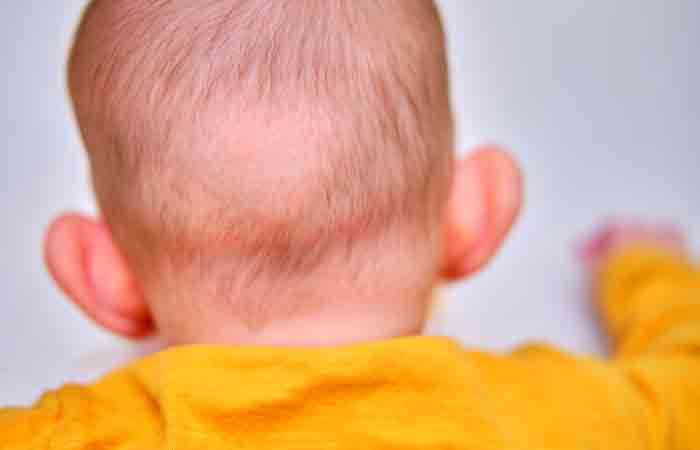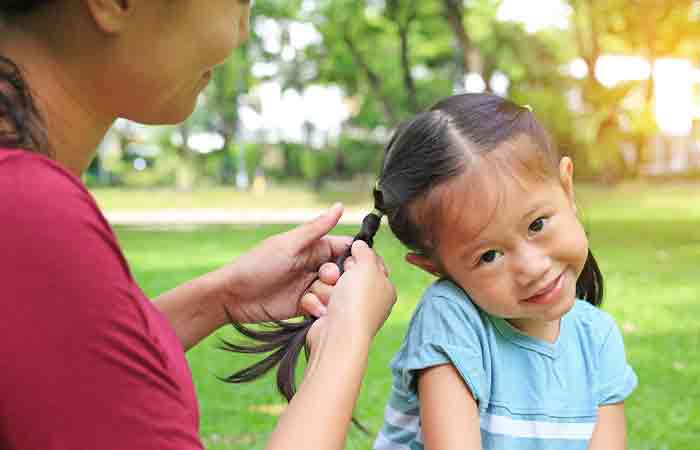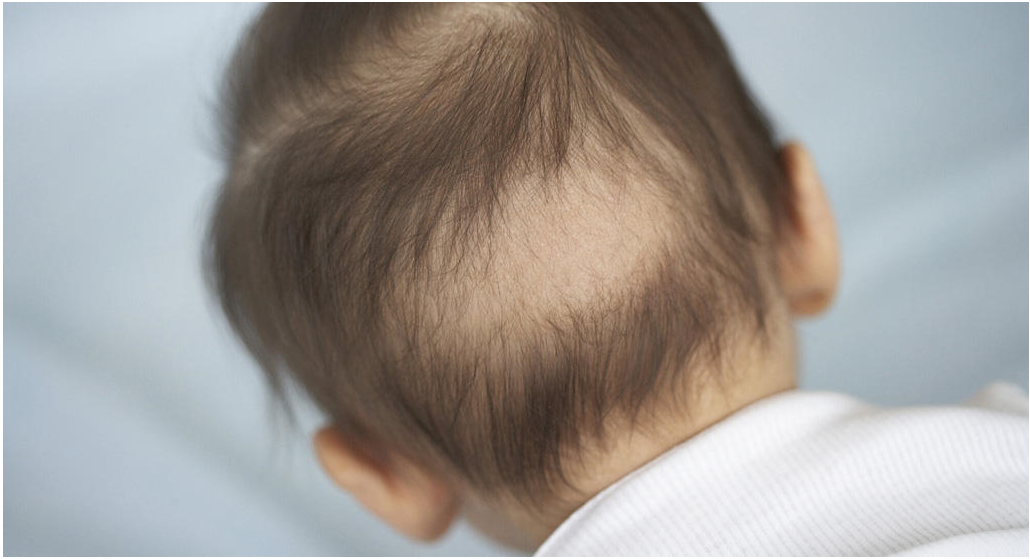The sight of a child losing hair can be a source of great distress. If you are struggling to determine the cause of childhood alopecia, then this post is for you. Research has demonstrated that there is a correlation between hair and self-image, emotional well-being, psychosocial functioning, and quality of life.
Consequently, hair loss in children, particularly when it happens at a young age, can have a profound psychological impact. In this post, we will explore the potential causes of hair loss in young people so that we can offer them advice on how to build inner confidence and seek an appropriate solution to the issue. So, let’s keep reading!
With the goal of exploring the relationship between health-related factors and alopecia, a survey was recently conducted with 1662 participants. The results of this study showed that individuals with a fatty scalp had a 37.4% higher incidence of alopecia, and it was found to have a detrimental impact on the quality of life of the surveyed students.
Causes Of Hair Loss In Children
Hair loss in children can stem from a variety of factors, some of which may be remedied without medical intervention, while others demand prompt attention from a physician. These causal factors can be categorized into two distinct groups.
- Non-medical causes
- Medical causes
1. Non-Medical Causes Of Hair Loss In Children
Hair loss in newborns can be attributed to non-medical factors such as friction, chemical use, blow drying, and tight hairstyles.
(a) Newborn Hair Loss: It is completely normal for certain infants to shed hair in the initial six months after their birth as a means of making space for fresh hair growth. There is no need to feel alarmed as this is a typical phenomenon.

(b) Friction: If children persistently rub their head against coarse surfaces such as carpets, floors, and mattresses, they may experience hair loss. However, once they refrain from this behavior, their hair will eventually begin to regrow.
(c) Use Of Chemicals: It is detrimental to the health of children’s hair to subject them to harsh chemical hairstyling procedures, such as bleaching, dyeing, perming, or straightening, which can result in hair loss (3). It is advisable to either completely refrain from such procedures or opt for natural and chemical-free alternatives.
(d) Blow Drying: Subjecting your child’s hair to excessive heat during blow drying, perming, or straightening can result in hair loss due to heat damage. It is recommended to utilize the lowest heat setting when blow drying and limit the frequency of other heat styling methods to prevent damage to the hair.

(e) Tight Hairstyles: When styling your child’s hair, it is important to be mindful of potential damage to the hair follicles and scalp. Pulling the hair tightly with a comb or hairbrush for ponytails, buns, or braids can cause physical trauma and ultimately lead to hair loss. Therefore, it is advised to detangle gently and opt for looser hairstyles to minimize the risk of hair loss.

2. Medical Causes Of Hair Loss In Children
Various medical conditions including infections, diseases, and deficiencies such as tinea capitis, alopecia areata, trichotillomania, telogen effluvium, hypothyroidism, and nutritional deficiencies can cause hair loss in children, as stated in source 4.
(a) Tinea Capitis: Tinea capitis, otherwise referred to as ringworm of the scalp, is an infection of the scalp caused by dermatophytes, a type of fungus. The spread of the infection is exacerbated by overcrowding and poor hygiene, and can easily be transmitted through physical contact or the sharing of personal hygiene items such as combs. Symptoms of this condition include patchy hair loss, the appearance of black spots in the affected areas, itching, redness, the development of bumps on the scalp, brittle hair, swollen lymph nodes, and a low-grade fever.
Dermatologists utilize KOH microscopy and Wood’s lamp examination to diagnose this infection (6). In other words, the physician will carefully inspect your child’s scalp and extract a sample of the affected skin to be analyzed in a laboratory for accurate diagnosis.
For approximately eight weeks, it is imperative for the afflicted child to adhere to the recommended antifungal medication regimen. Additionally, the utilization of an antifungal shampoo is also highly recommended to halt the propagation of this ailment.
(b) Alopecia: Alopecia areata, an autoimmune disease, results in the immune system attacking hair follicle cells, leading to patchy hair loss (8). Its onset may be due to genetic factors. Depending on the pattern of hair loss, alopecia is classified into three types:
- Alopecia areata – Bald patches form on the head when some parts of the scalp lose their hair.
- Alopecia totalis – Hair loss from the scalp as a whole. It is possible to lose eyebrows and eyelashes.
- Alopecia universalis – Hair falls out from head to toe.
By scrutinizing the child’s medical history for cutaneous and systemic autoimmune disorders, medical practitioners arrive at a diagnosis of this malady through the analysis of a hair sample obtained from the child’s scalp and sent for examination at a laboratory.
Although immune system disorders are the root cause of alopecia areata, there is currently no known cure for this condition. Nonetheless, certain drugs like anthralin and minoxidil or corticosteroid creams can be used to mitigate its symptoms. However, it is important to note that these therapies do not aid in hair regrowth and may cause some adverse effects.
In contrast, some people prefer using essential oils for a more natural approach to treatment. It is worth noting that with proper treatment, children can expect to see their hair grow back within a year.
(c) Trichotillomania: Trichotillomania manifests as an obsessive-compulsive disorder that compels individuals to intentionally pull out their own hair, sometimes resulting in them consuming the strands they have removed. Patchy hair loss and hairs of differing lengths are among the consequences of this condition. It is worth noting that hair regrowth is possible if the person manages to stop pulling it out.

Dermoscopy, also known as dermatoscopy, is the customary diagnostic method employed by physicians to detect this particular ailment.
Once the child ceases pulling their hair out, it typically regrows. In addition to seeking guidance from a dermatologist, it is essential to also consult a psychologist. Cognitive Behavioral Therapy (CBT) can assist in increasing your child’s awareness of their hair-pulling habits and help them recognize the emotional triggers behind it. Ultimately, this can lead to the cessation of such behavior.
(d) Telogen Effluvium: The normal hair growth cycle involves a resting phase known as Telogen, during which hair growth comes to a halt and old hairs fall out to pave the way for new ones. Telogen effluvium, a temporary hair loss condition, occurs when hair prematurely enters this phase due to stressful, shocking, or traumatic events. For children affected by this condition, hair loss is more severe than the average rate of 100 hairs per day, as they lose 300 hairs daily (13).
Diagnosis of this condition may involve microscopic examination of shed hair, as well as tests for CBC, serum iron, serum zinc, vitamin D deficiency, and thyroid function.
No specific medical treatment is necessary for this condition. As soon as the child is no longer experiencing stress or trauma, their hair will regrow. It typically takes between six months and a year for the hair to fully regenerate.
(e) Hypothyroidism: Located in the neck, the thyroid gland releases two critical hormones, T3 and T4, that play a key role in regulating the body’s metabolism. When there are disorders or inefficiencies in hormone production – whether it be an underproduction or overproduction – the body’s metabolism can be negatively affected.
In cases where there is a lack of thyroid hormones being produced, the resulting condition is known as hypothyroidism. Those experiencing hypothyroidism may exhibit symptoms such as fatigue, weight gain, joint and muscle pain, constipation, dry skin, and thin and brittle hair.
Diagnosis of this condition can be facilitated through the utilization of the thyroid function test.
Effective treatment for this condition involves the administration of oral medication and the consumption of foods rich in iodine and essential nutrients. With the commencement of treatment, hair fall ceases progressively, and restoration of hair growth may take several months.
(f) Nutritional Deficiencies: Inadequate consumption of vital nutrients, such as vitamins, minerals, and protein, can trigger hair loss in children (4). Eating disorders like anorexia and bulimia can also result in hair loss. Moreover, a surplus of vitamin A or a lack of iron, vitamin D, zinc, niacin, biotin, protein, or amino acids can lead to hair loss (15).
The identification of nutrient deficiencies can be aided by medical examinations such as blood and urine tests, among others.
By incorporating a well-balanced and nourishing meal plan alongside essential supplements, your child’s hair can undergo regrowth by addressing any underlying deficiencies.
(g) Chemotherapy: Chemotherapy and radiation therapy are potent treatments for cancer, but they pose a risk of hair loss for children undergoing them. These therapies halt the rapid division of cells, including hair follicle cells, to curb cancer progression. However, hair regrowth resumes once treatment is complete, and hair loss is not permanent.
Hair loss in children can also be attributed to various medical conditions such as allergies, lupus, atopic dermatitis, psoriasis, and sickle cell anemia (4).
How Common is Hair Loss In Babies And Children?
Children and adults both experience hair loss, but the causes may vary. It is worth noting that a daily loss of approximately 100 strands of hair is considered normal.
To determine if your child is experiencing hair loss, you can conduct a tug test. Take a small section of their hair and pull it gently. If over 10% of the hair comes out, it could indicate hair loss.
There is no need for concern as hair loss can usually be reversed. Seeking advice from a trichologist or pediatrician is the most effective course of action in treating hair loss.
Should You See A Doctor?

If you notice hair loss in your child, it is advisable to consult a doctor promptly. The doctor will conduct a diagnosis to determine the underlying cause of the hair loss and recommend an appropriate course of treatment. As part of the diagnostic process, the doctor may ask questions regarding your child’s medical history, as well as yours. Additionally, they may order some lab tests. While hair loss is usually irreversible, there may be some instances where it is permanent due to certain medical conditions.
When a child experiences hair loss, it can be an emotionally challenging experience. To support them through this difficult time, it is important to have an open conversation and explain the situation to them.
How To Talk To Your Child About Hair Loss
Hair loss can present a significant challenge, particularly for a child, with the potential to cause psychological distress. The manifestation of stress, which could result in further hair loss, or social withdrawal, could be indications that your child is grappling with the issue.
When discussing your child’s hair loss, it is crucial to establish a secure environment that fosters open communication. Educate them about the reasons behind their hair loss and explore potential remedies for hair regrowth. Consider seeking guidance from a therapist and consulting your child’s pediatrician to ensure comprehensive support.
If the hair loss cannot be reversed, there are several alternatives that can be considered, such as wigs, hair extensions, scarves or hats. You can also try changing your child’s hairstyle to cover the bald spots, and seeking advice from a professional hair stylist can be helpful. In addition, hair filler products can be used to make the hair appear fuller, but it is important to consult with a doctor before using any products on your child’s scalp or considering a hair transplant.
Frequently Asked Questions
How do I know if my child has alopecia?
Alopecia areata typically manifests in the form of one or more bald spots on the scalp that lack redness or scaling.
Which vegetables are good for hair growth?
The consumption of certain vegetables has been associated with improved hair growth, thanks to the presence of beta-carotene, vitamin A, antioxidants, and various other essential nutrients. These vegetables include spinach, carrots, onions, sweet potatoes, tomatoes, beetroot, and French beans.
Does vitamin D affect hair?
Alopecia has been found to have a correlation with a deficiency of vitamin D. Furthermore, vitamin D has been identified as a key factor in promoting hair growth. Nevertheless, it is recommended to seek advice from a doctor before taking vitamin D supplements.
How to fix hair loss due to eczema in toddlers?
Eczema, a condition that causes inflammation and irritation of the skin, can lead to hair loss if the scalp is scratched too aggressively due to itchiness. Seeking medical advice and utilizing medicated shampoos, over-the-counter products, and either oral or topical steroids can help to reduce inflammation of the scalp and prevent further hair loss.
Is it normal for my two-year-old’s hair to fall out?
Temporary hair loss can occur in children and toddlers and is not an uncommon phenomenon. However, if you notice excessive hair loss and bald patches, it is advisable to seek medical advice from a doctor.
